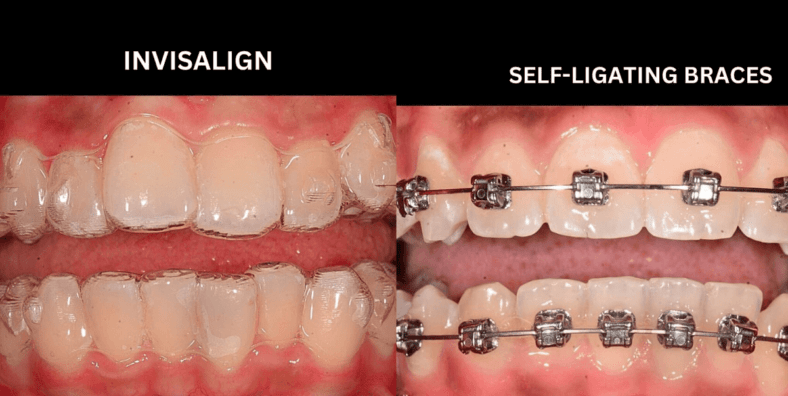Orthodontic treatment involves the correction of mal-aligned teeth. It also helps in improvement aesthetically & functionally. Orthodontic treatment is done only by dental specialists (Orthodontists). They are dental professionals who diagnose & treat dental & facial irregularities.
Types of Orthodontic Problems:
- Crowded dentition
- Deep Bite
- Underbite
- Open Bite
- TMJ disorder
- Spaced dentition
- Crossbite
Crowded Dentition:
Teeth overlap with each other either due to jaw/arch-length discrepancy or large crown size.
Overbite/Underbite:
When the vertical overlap between upper & lower teeth are too far over or under. Excessive vertical overlap is called a deep bite. Less vertical overlap is called an underbite.
Open Bite:
When the upper teeth does not overlap with the lower teeth. There is no vertical overlap. This occurs mainly due to inherent habit, i.e. tongue thrusting or due to the presence of a large tongue.
A solution to this is either habit control using tongue exercises or fixed/removable mechanotherapy.
TMJ Disorder:
Patients who have severe jaw pain or muscle spasms due to clenching or grinding, we treat them with night guards or TMJ splints to relief the pain & discomfort.
Spaced Dentition:
There will be gaps in between teeth either due to missing teeth, arch length discrepancy or the smaller crown size.
Crossbite:
When the upper teeth are more lingual than the lower teeth. There is something called a scissor bite, where the upper teeth are more buccal than the lower teeth. There is no inter-cuspal digitation.
Common Orthodontic Appliances Used Are:
- Braces: Metal, Ceramic, Self-ligating
- Invisalign
- Orthopaedic appliances (Headgear + Facemask therapy)
- Myofunctional Appliances
Treatment Process involves:
- Orthodontic Consultation
- Case Evaluation
- Measurement (Records) and Case History
- X-rays: Lateral Ceph & OPG, CBCT (if needed)
- Treatment Planning (Customized)
- Appliance Placement/Delivery
- Follow-Ups
- Retainer Placement (Fixed or Removable)
Duration of Treatment:
Orthodontic treatment usually lasts between 12 to 36 months. It depends on the severity of the malocclusion and also the patient compliance (in the case of aligners).
Follow-up appointments are needed for the treatment to progress.
Benefits of Ortho-Treatment:
- Aesthetic: Enhances the appearance.
- Function: Bite correction can improve oral functions, i.e. chewing.
- Oral health: Properly aligned teeth are easier to clean & thus are less prone for cavities or gum diseases.
- Intercept & prevent oral health problems & developing malocclusions.
- Habit control by orthodontic appliances can be done.
Considerations:
- Age: Early treatments serve to benefit intercept and prevent developing malocclusion. Orthodontic treatment can occur at any age. We have treated patients who are 6 years old to 80+ years.
- Cost: The cost of orthodontic treatment varies depending upon the type of appliance or severity of the malocclusion & treatment time.
What Are Braces?
Traditional metal braces are orthodontic appliances that are used to correct teeth malalignment & dental problems.
Types of Braces:
1. Metal
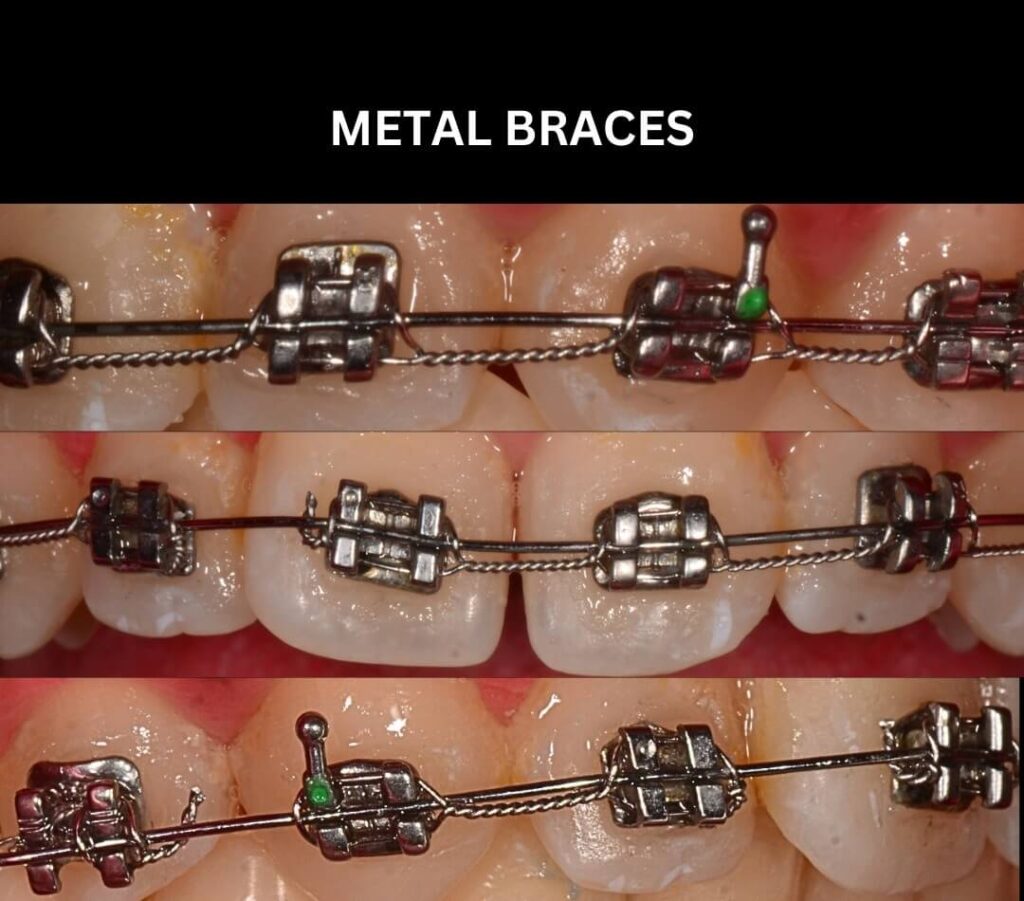
2. Ceramic
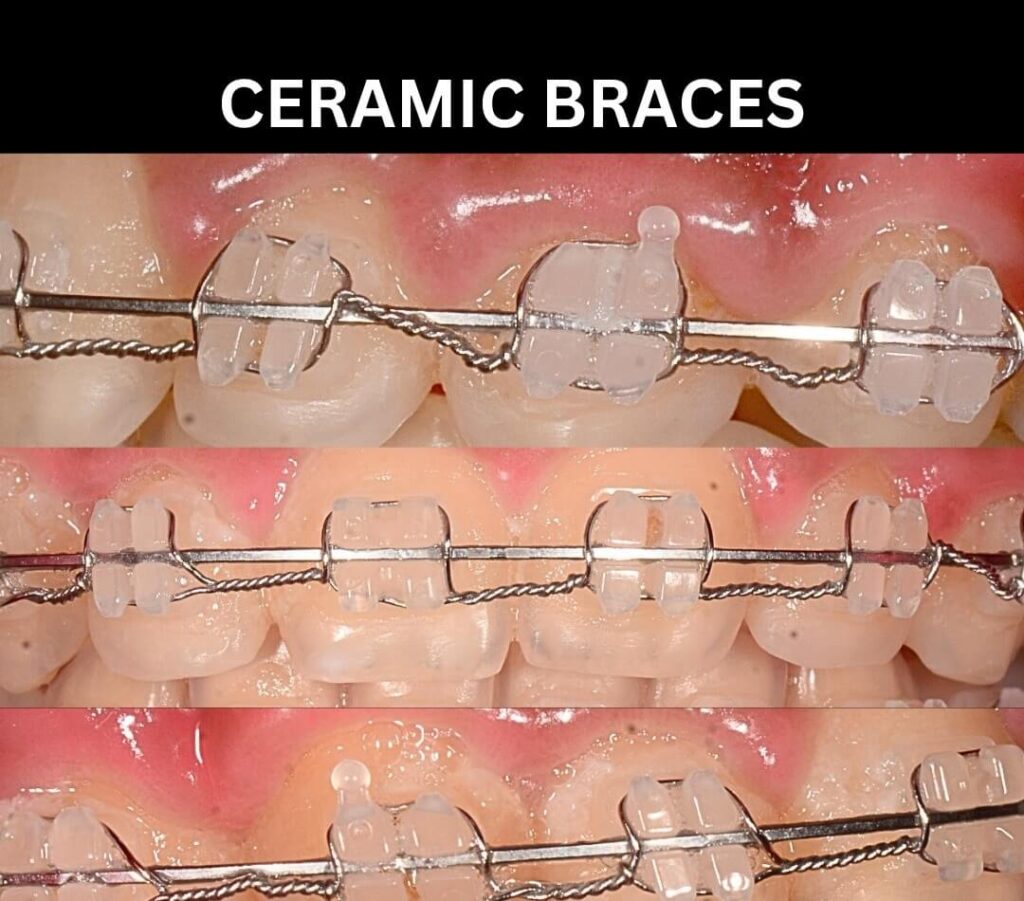
3. Self-ligating

4. Invisalign (Aligners)
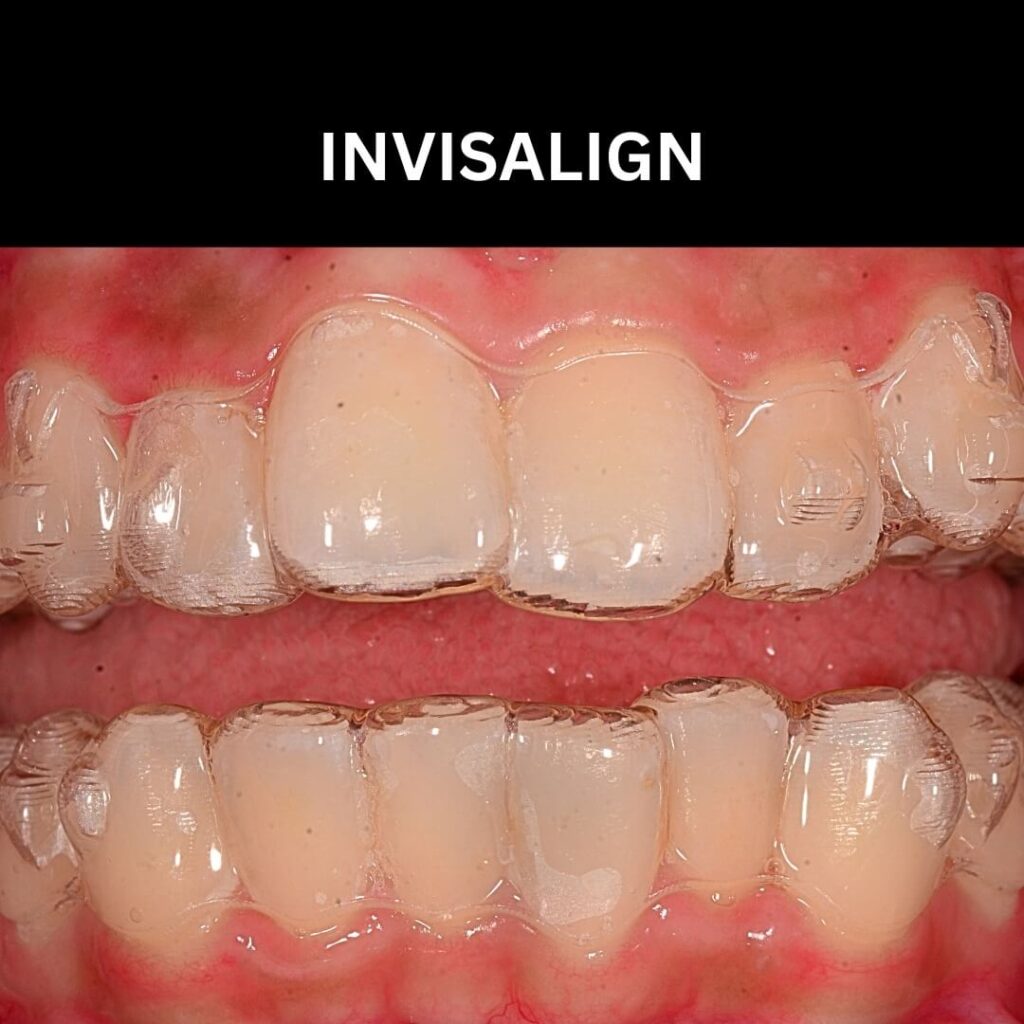
Pros for Braces:
- Fixed to the patient’s teeth, less need for compliance
- Effective for complex cases
- Can treat wide range of orthodontic problems
Cons for Braces:
- Uncomfortable & may cause discomfort or pain on your first appointment
- More Hygiene maintenance
- Affect eating pattern
- Frequent Adjustments, regular follow-ups
- Visible
- Dietary Restrictions
What is Invisalign?
They are a custom-made series of aligners that shift teeth into place. It’s a popular choice for people seeking a more discreet orthodontic treatment.


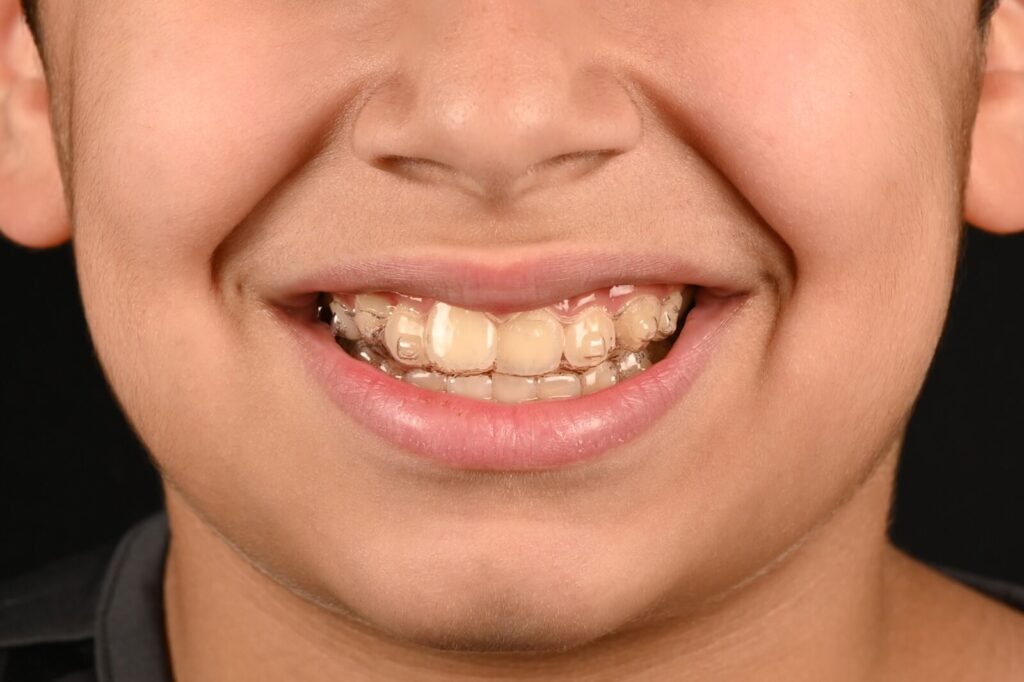
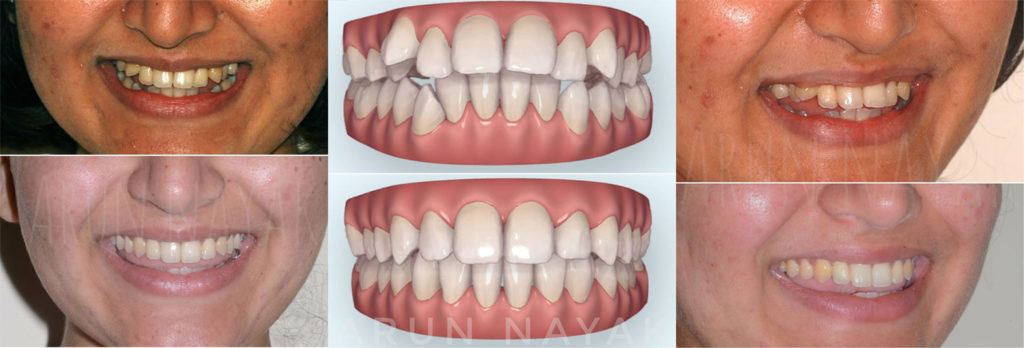
How it Works?
- There are a series of custom-made aligners designed for individuals, which they need to wear it for 20-22 hours a day. They have to change every 10 days or 2 weeks, which will vary from case to case.
- Aligner will move the teeth to the position custom-made/designed for you over time.
Who is Best Suited for Invisalign?
- Highly compliant patient.
- Individuals looking for discreet treatment options.
- People are staying abroad and can’t come for frequent follow-up appointments.
Pros of Invisalign:
- Nearly invisible, which is a great choice for people concerned with aesthetics.
- Removable—where you can eat, and drink anything.
- More comfortable.
- Fewer appointments & follow-ups.
- Oral hygiene maintenance is easy.
Cons of Invisalign:
- Requires discipline; will work only if the patient wears it.
- It’s slightly at the costlier end compared to braces, considering the use of innovative technology.
Which One Should You Choose: Braces OR Aligners?
Braces:
They are fixed appliances that are fixed to the teeth by wires and brackets, making them immovable.
They require maintenance, which needs frequent follow-ups to have the wires adjusted and tightened.
They have certain dietary restrictions that are avoiding sticky or hard foods. Oral hygiene maintenance is essential, especially Brushing and flossing might be more challenging with braces, necessitating particular caution to avoid plaque accumulation around the brackets. They are less aesthetic than Aligners, while ceramic braces offer a more aesthetic look; traditional metal braces can still be obvious & noticeable. Braces are less comfortable because of the pressure they apply and the irritation they produce from the brackets and wires.
Aligners: Invisalign, for example
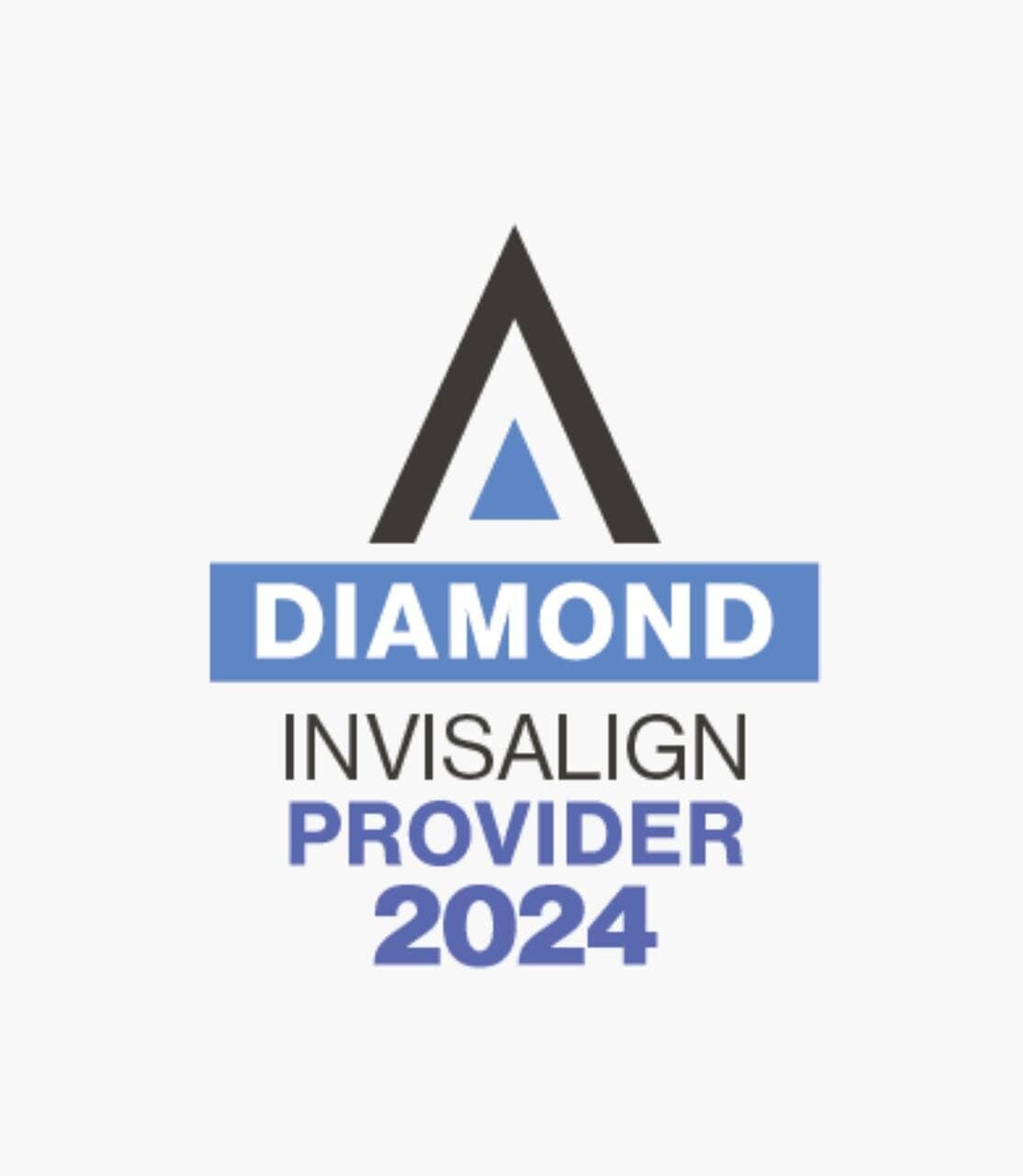
They are removable appliances which are transparent, removable trays that cover your teeth. They are less Visible: People frequently choose them because they are nearly unnoticeable.
As directed, you must wear the aligners for 20 to 22 hours every day and replace them every 10 days to 2 weeks. The dietary freedom is comparatively more; you can eat anything you want without worrying about breaking your aligners because they are removable. Oral Hygiene maintenance, Unlike braces, aligners can be taken off to allow for simpler brushing and flossing. For people who are self-conscious about their looks, clear aligners are more cosmetically pleasant and nearly unnoticeable. In general, aligners cause less discomfort and pressure on the teeth and gums.
Making the Right Choice
Choosing between braces & Invisalign is a personal choice. The choice depends upon the dental needs, preferences and lifestyle.
Schedule a consultation with Fort Dental Clinic today to discuss your options and take a step forward for a healthier smile. We offer personalized care to make your journey to a better smile as comfortable as possible.

